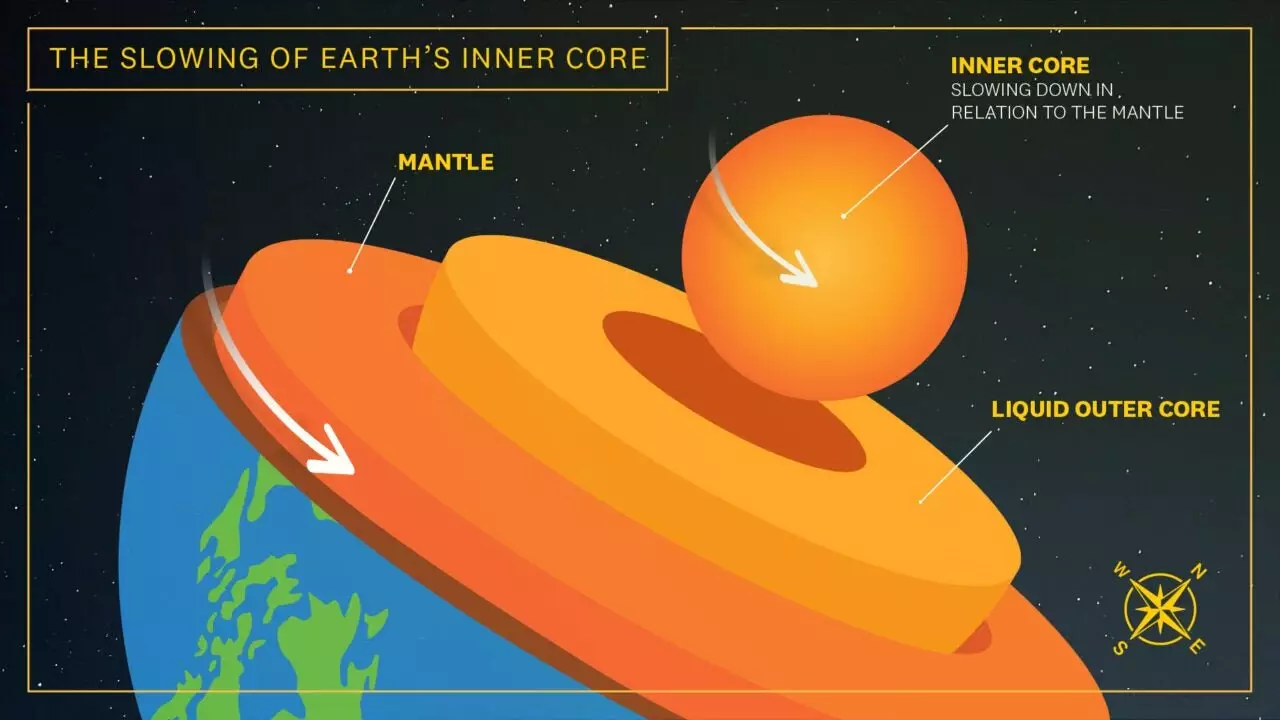Recent research conducted by scientists at the University of Southern California has shed light on a fascinating phenomenon regarding the Earth’s inner core. This new study, published in Nature, reveals that the inner core is backtracking and slowing down in relation to the planet’s surface. This discovery challenges previous assumptions and raises intriguing questions about the dynamics of our planet’s core.
For over two decades, scientists have debated the movement of the Earth’s inner core. Some research suggested that the inner core rotates faster than the planet’s surface, while others proposed different models. The USC study, led by John Vidale, Dean’s Professor of Earth Sciences, provides compelling evidence that the inner core began to decrease its speed around 2010, moving slower than the Earth’s surface. This unexpected finding has significant implications for our understanding of the Earth’s interior.
The inner core of the Earth is a solid iron-nickel sphere, roughly the size of the moon, located more than 3,000 miles beneath our feet. It is surrounded by the liquid iron-nickel outer core. Due to its inaccessible nature, scientists rely on seismic waves from earthquakes to study the inner core’s movements. The USC researchers utilized a novel approach, analyzing data from repeating earthquakes and historical nuclear tests to track changes in the inner core’s speed.
Vidale and his colleague Wei Wang employed waveforms from 121 repeating earthquakes around the South Sandwich Islands, spanning from 1991 to 2023. Additionally, they examined data from Soviet and American nuclear tests conducted between 1971 and 1974. This comprehensive analysis revealed that the inner core’s slowing speed is influenced by the churning of the liquid outer core and gravitational interactions with the rocky mantle.
The discovery of the inner core’s backtracking and slowing down raises questions about its potential impact on the Earth’s surface. While the exact consequences remain speculative, Vidale suggests that the length of a day could be altered by fractions of a second. This subtle change, although imperceptible to most, reflects the intricate dance of Earth’s inner core and its interconnectedness with the planet’s other layers.
Looking ahead, the USC scientists are eager to delve deeper into the inner core’s trajectory and unravel the mysteries behind its shifting movement. By exploring this phenomenon in greater detail, they aim to uncover the underlying causes and implications of the inner core’s behavior. Vidale emphasizes the dynamic nature of the inner core, hinting at the possibility of further surprises awaiting discovery.
The Earth’s inner core’s recent behavior challenges conventional wisdom and highlights the complexity of our planet’s interior dynamics. The USC study offers valuable insights into the inner workings of the Earth and paves the way for future research endeavors in this fascinating field of study. As scientists continue to unravel the mysteries of the inner core, new discoveries are bound to enrich our understanding of the Earth and its intricate mechanisms.


Leave a Reply